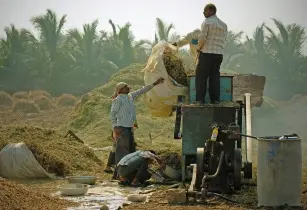The International Finance Corporation (IFC) and the Global Agriculture and Food Security Program (GAFSP) are collaborating with the United Nations World Food Programme (WFP) to launch smallholder farmer financing programs aimed at improving food security among vulnerable people in Rwanda and Tanzania
The initiatives with KCB Bank Rwanda Limited and CRDB Bank PLC in Tanzania are part of the Farm to Market Alliance, a multi-stakeholder platform established in 2016, of which IFC and WFP are global members, to create agriculture value chains that secure sizeable local and international demand for produce from smallholder farmers. The Alliance is designed to create systemic change in markets through a holistic approach to smallholder development. A sustainable and commercially viable approach will benefit individual farmers and broaden the global supply base of agricultural produce to meet increasing demand.
IFC, joined by GAFSP, will provide advisory services in the form of capacity building activities to improve the professionalism of smallholder farmer cooperatives in the area of financial management and governance as well as agronomy and input use training.
“Smallholder farmers produce most of the world’s food, but they form the majority of people living in poverty and often have food security challenges themselves,” said David Beasley, WFP executive director. “We want to help them get better access to markets so they build more demand for their products, thus making a long-term impact on the economic future for them and their families. But WFP can’t do it alone, and that’s why we are grateful for our collaboration with others through the Farm to Market Alliance."
“Agribusiness drives many African economies and creates the most jobs on the continent,” said IFC CEO Philippe Le Houérou. “Through the Farm to Market Alliance, IFC is creating new markets—by connecting smallholder farmers in Sub-Saharan Africa directly with buyers. The result: improved productivity and higher living standards for people in rural areas.”







